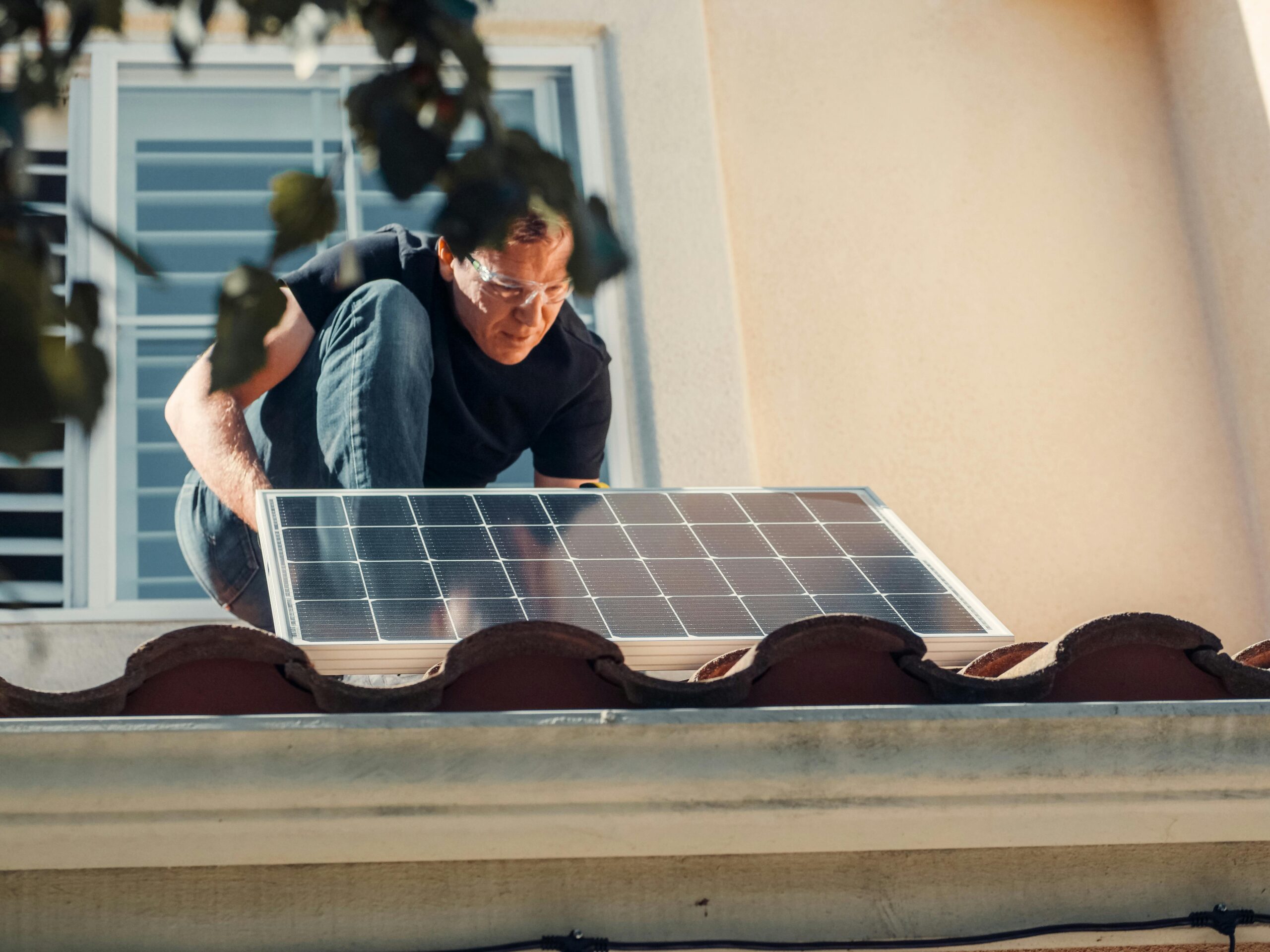As solar energy establishes its position as a cornerstone of sustainable power generation, the technologies that drive its efficiency and effectiveness advance at a rapid rate. At the centre of every solar panel system is a critical component that sometimes goes unnoticed but plays a critical role in converting sunlight into useful electricity: the inverter. Their importance goes much beyond this simple conversion, influencing the total performance, efficiency, and adaptability of a solar panel system. Learn more about the role of inverters in your solar panel system when you visit Solar Panels Harrogate.
In the context of solar panels, an inverter is critical in converting the direct current (DC) electricity generated by solar panels into alternating current (AC) electricity, which is the typical type of electricity used in most homes and businesses. The inverters’ primary job is to convert the solar energy generated by solar panels into a useful and compatible form for powering household appliances and devices, as well as feeding back into the grid.
Here are the main roles of inverters in a solar panel system:
- DC to AC Conversion: Solar panels produce electricity in the form of direct current. However, most domestic appliances and the electrical grid use alternating current (AC). Inverters transform the DC electricity generated by solar panels into AC electricity, which is compatible with building electrical systems.
- Voltage Regulation: Inverters also help to regulate the voltage of the electricity they produce. This guarantees that the electricity fulfils the safety and efficiency criteria for residential and commercial use.
- Synchronisation with the Grid: In grid-tied solar systems, inverters synchronise the AC electricity generated by solar panels with the power grid. This is necessary for feeding excess electricity back into the grid when the solar panels create more power than is required locally. This practice, known as net metering, allows consumers to obtain credits or compensation for surplus electricity they supply to the grid.
- Monitoring and Data Logging: Many current inverters include built-in monitoring and data logging features. This enables users to track the functioning of their solar panel system, monitor energy generation, and identify any problems that may emerge. Some inverters can also be connected to web systems, allowing for remote monitoring and control.
- Safety mechanisms: Inverters frequently include safety mechanisms to protect the solar panel system and associated components. These characteristics could include overvoltage, overcurrent, and ground fault protection.
There are several types of inverters used in solar panel systems, including string inverters, microinverters, and power optimizers. The choice of inverter is determined by a number of criteria, including the size of the solar installation, shading concerns, and unique system needs.
The worth of a solar inverter to you
A solar inverter is valuable to individuals and organisations that invest in solar energy systems for a variety of reasons, including:
Energy Independence: Solar inverters allow people to harvest energy from the sun, lessening their need for traditional grid electricity. This improves energy independence and may result in decreased electricity bills over time.
Financial Savings: Solar inverters are critical to optimising the financial benefits of solar energy systems. It allows individuals to use solar energy to power their homes or businesses and perhaps offset or reduce their electricity bills.
Return on Investment (ROI): The quality and efficiency of the solar inverter have a direct impact on the overall performance of the solar power system. Investing in a dependable and efficient inverter might result in a better ROI throughout the course of the solar panel installation.
Environmental Impact: Solar energy is a clean and renewable source of electricity. Individuals that invest in a solar inverter help to reduce their carbon footprint while also supporting a more sustainable and ecologically friendly electricity source.
Grid Interaction and Net Metering: Solar inverters allow grid-connected solar systems to communicate with the electric grid. This interaction enables individuals to feed excess electricity back into the grid, participate in net metering programs, and potentially obtain credits or compensation for excess energy production.
Monitoring and Maintenance: Many inverters include monitoring capabilities, allowing users to track the functioning of their solar energy system. This information aids in the early detection of any problems, ensuring that the system runs at peak efficiency.
Energy Storage Integration: Inverters play an important role in systems that use energy storage solutions like solar batteries. They enable the charging and discharging of energy stored in batteries, letting people use solar power even when the sun is not shining.
Increase Property Value: The existence of a solar energy system with a dependable inverter can increase the resale value of a property. Many homebuyers cherish the potential of lower energy bills and eco-friendly features.
As the need for renewable energy sources rises, inverters will remain critical components of any solar power system. People and businesses that are considering solar panel installations should carefully select the suitable inverters to ensure optimal performance and long-term sustainability. Consult with a professional installer or provider like My Green Electricity to determine the finest inverters for your individual requirements. Visit now!
